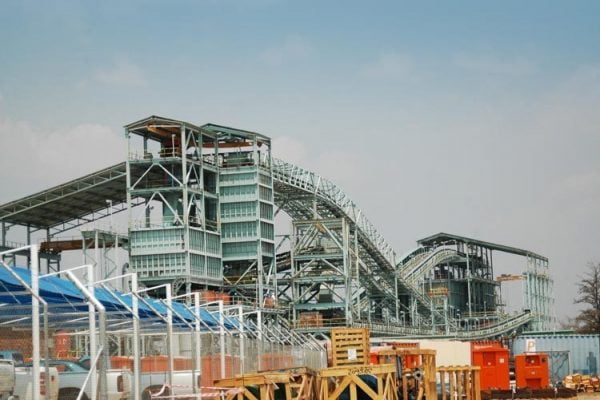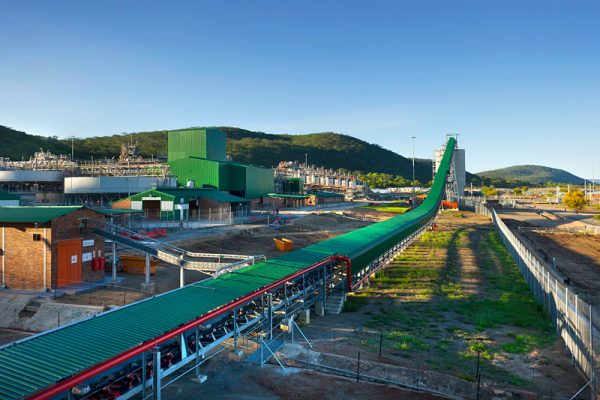Zimplats held back by Zim tag

OUR recent meeting with Finance minister Mthuli Ncube highlighted that the country had become much more investor-friendly.
It was also clear that the positive developments we are seeing today are the result of a plan that was started three years ago.
Zimbabwe is on track to run a current account surplus for the third year in a row and it has started to repay small amounts to international lenders — the first step in restoring Zimbabwe’s ability to access international funding.
The government is showing a lot of discipline in resisting the temptation to print large amounts of money and in addressing the fuel and maize subsidies.
The benefit of removing the fuel subsidy was not just the saving on each litre of fuel consumed, but also a large reduction in the total fuel consumed as market-related prices stopped cross-border smuggling, where people bought fuel cheaply in Zimbabwe and sold it at higher prices in neighbouring countries.
Even some factors outside Zimbabwe’s control turned from headwinds into tailwinds.
Prices of key exports such as gold and platinum group metals (PGMs) declined between 2012 and 2018, but have seen a strong recovery recently.
The severe drought in 2018/19 not only impacted agriculture, but the low water levels of the Kariba Dam also had a big impact on electricity generation.
The drought has ended and it looks like Zimbabwe will produce enough maize to meet the country’s demand this year — a spectacular turnaround from the past decade where production only met about half of the demand.
What is particularly positive is that agricultural output is not only improving as a result of better rainfall, but also because of better planning. Similarly, the increase in precious metal exports is not just because of higher prices, but is also due to policy changes that encourage investment in the mining sector.
We are really excited about the investment opportunities that arise when share prices reflect overly pessimistic perceptions.
Zimplats, which is currently the largest holding in our Africa frontiers strategy, is a case in point.
Zimplats is a Zimbabwean PGM mine and is a subsidiary of Impala Platinum, one of the largest PGM producers in the world.
Zimplats is a world-class mine: it is a shallow, mechanised mine that is low on the cost curve, has a predictable production profile and has sufficient reserves to last for almost 40 years.
In addition, the company operates in an industry with supportive fundamentals.
Demand is well supported as more stringent emission regulations force vehicle manufacturers to increase PGM loadings, while years of low capex across the industry means that there is not a lot of new supply coming online over the next few years.
The company has a fortress balance sheet, with a net cash balance of $226 million as at December 2020.
This is more than 10% of the company’s current market capitalisation and, given where PGM prices are currently, we believe this cash balance has grown substantially in the first few months of 2021.
Importantly, most of the cash is held outside Zimbabwe.
Our investment in Zimplats has done incredibly well for our clients, with the share price tripling over the past two years.
However, we don’t believe the company is expensive simply because the share price has increased.
The company still trades on a very attractive multiple — Zimplats trades on a forward price-to-earnings ratio of just three times and has a double-digit dividend yield.
Even more appealing is the fact that these multiples do not capture the expansion plans announced by the company recently.
What we like about the expansion is that this is a low-cost, low-risk investment, which will have a meaningful positive impact on earnings over time. We estimate that this investment will increase annual production by approximately 30% from 2023, and at current commodity prices, we estimate that the payback period on this investment will be less than two years.
In our view, the main reason why Zimplats trades on much lower multiples compared to its peers is the fact that it is a Zimbabwean business.
We think there is a general lack of understanding of how much property rights have improved over the past few years. In 2018, the government started to address indigenisation laws, but the 51% local ownership requirement remained in place for platinum and diamond companies. In late 2020, this requirement for platinum and diamonds was also removed.
Another significant milestone for Zimplats was when its special mining lease was converted to a normal mining lease in 2018. This now gives it the right to mine for the full life of the mine, and also simplifies and reduces its tax burden. These developments are consistent with the message from other Zimbabwean miners, who report that the government has become much more pragmatic, resulting in a more predictable policy environment that enables mining companies to invest in the country.
A big concern for foreign investors looking at Zimbabwe is the value of the currency and currency repatriation. In this regard, Zimplats is completely different from other local businesses. It is an exporter that generates real US dollars.
This puts the business in a strong position in a country where hard currency is in high demand. The government simply cannot afford for production to halt at a mine like Zimplats and has, therefore, been supportive in ensuring that mines can continue with their operations.
Another important point for equity investors is that Zimplats is listed on the Australian Stock Exchange (ASX). In contrast to shares listed within Zimbabwe, which has historically exposed investors to repatriation issues, shares on the ASX do not encounter this problem.
We know that Zimbabwe has seen several false dawns. Many difficult hurdles still need to be overcome before funding from organisations like the IMF becomes a possibility. We also know that it is not impossible that the government will try to access a larger portion of the hard currency generated by this business.
However, one of the most important things we try to do as stewards of our clients’ capital, is to try and price risk appropriately. When we look at Zimplats, we believe that investors are blinded by their negative perceptions of Zimbabwe, and, as a result, the company trades on a valuation that offers a very compelling risk-reward profile to the long-term investor.
NewsDay


